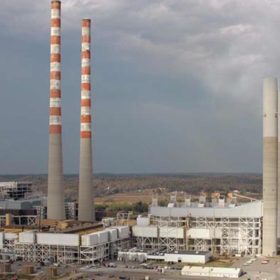Plus ça change, plus c’est la même chose.
The epigram above, first offered Jean-Baptiste Alphonse Karr in 1849, means (roughly) “The more things change, the more they stay the same.” Rarely has it applied more aptly than to the rate at which states are trying to alter net-metering laws and rates.
The NC Clean Energy Technology Center (NCCETC) offered proof in its 50 States of Solar: Q4 2016 Quarterly Report and Annual Review, which it released today. While 47 states trying to change the solar playing field an average of 4.4 times, they found efforts to implement fixed and demand charges thwarted by regulators – and trend that continued throughout the year.
Forty-seven states (and the District of Columbia) tried to change their solar policies 212 times in 2016. Net-metering laws topped the list of items states tried to change, followed by residential fixed charges/minimum bill increases.
Coming in a distant third was the obsession states have with value-of-solar/net-metering studies, in a (vain) attempt to find one that will support the utilities’ fictional contention that solar customers shift costs to non-solar customers by not paying for grid upkeep.

Forty-six utilities asked for residential fixed-charge increases of 10% last year, but regulating bodies frustrated their efforts. In 79% of the cases, the utilities were granted only partial or no increases.
The report, compiled by Autumn Proudlove, Kate Daniel, Brian Lips, David Sarkisian and Achyut Shrestha, found what could be an anomaly – and it’s one that should make solar installers giddy. Though demand charges received a lot of attention last year, fewer utilities proposed the charges in 2016, and those that did found an unreceptive audience among regulators. Not a single commission approved such a request.
While Arizona and Nevada earned recognition for being the two most active states for attempted changes, the Northeast put more states in the Top 10 than any other region. New York and Maine were Nos. 3 and 4, while Massachusetts came in at No. 6 and New Hampshire at No. 9.

The report also highlighted the top five solar policy developments in the fourth quarter of 2016, including:
In December, after a brutal three-year Baatan Death March of a value-of-solar docket (with one commissioner saying he never wanted to go through such a process again), the Arizona Corporation Commission ended retail-rate net metering, substituting a system of crediting customers at an avoided cost rate for solar energy sent to the grid. This credit rate will be determined during individual rate cases.
Many observers believe the decision will have a chilling effect on the Arizona rooftop solar industry, saying that without the net-metering payments accelerating the payoff, customers may be loathe to invest in a system.
- Rocky Mountain Power proposes new rates for residential solar customers in Utah
Rocky Mountain Power, Utah’s only investor-owned electric utility, proposed new rates for residential solar customers in November. New net metering customers would have a demand charge, a higher fixed charge, and significantly lower energy rates.
Swift public condemnation of the proposal, including by Robert Redford and other high-profile opponents, persuaded the Public Service Commission to suspend implementation of the rates to allow stakeholders to continue to seek mutually acceptable solutions.
- Gulf Power requests $48.06 residential fixed charge
In October, Gulf Power Co. in Florida requested a 155% increase in its residential fixed charge, which could amount to a monthly charge of approximately $48 – one of the highest residential fixed charges requested over the last two years.
- Connecticut regulators decrease United Illuminating’s residential fixed charge
In contrast, regulators in Connecticut reduced United Illuminating’s residential monthly fixed charge from $17.25 to $9.64. The utility had proposed increasing the customer charge to $18.74. The Public Utilities Regulatory Authority plans to re-examine the customer charge for years two and three of the rate case in the future.
- Diverse net-metering successor proposals filed in New Hampshire
Stakeholders filed their proposals for New Hampshire’s net metering successor policy in the fourth quarter. The various proposals submitted include real-time pricing or time-of-use based crediting, a fixed solar credit rate, credits at the default energy rate, and residential demand charges.
The NCCETC report considered policy changes of investor-owned utilities and large publicly-owned or nonprofit utilities that served at least 100,000 customers.
This content is protected by copyright and may not be reused. If you want to cooperate with us and would like to reuse some of our content, please contact: editors@pv-magazine.com.








By submitting this form you agree to pv magazine using your data for the purposes of publishing your comment.
Your personal data will only be disclosed or otherwise transmitted to third parties for the purposes of spam filtering or if this is necessary for technical maintenance of the website. Any other transfer to third parties will not take place unless this is justified on the basis of applicable data protection regulations or if pv magazine is legally obliged to do so.
You may revoke this consent at any time with effect for the future, in which case your personal data will be deleted immediately. Otherwise, your data will be deleted if pv magazine has processed your request or the purpose of data storage is fulfilled.
Further information on data privacy can be found in our Data Protection Policy.